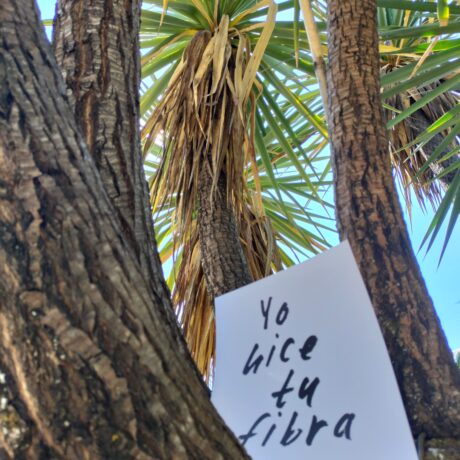The Future of Denim, Part #2: Re-use, Re-Pair, Re-Cycle
“Sustainability is like teen sex. Everybody talks about it. Nobody does it very much. And when they do it, they don’t do it very well.” It’s been ten years since American sustainability journalist Joel Makower first coined this now-infamous phrase, but it makes regular comebacks, most recently at this year’s Drapers Sustainable Fashion conference. The quote is always met with laughter, but it’s longevity reminds us of the fashion industry’s glacial pace towards a solution to the the havoc it wreaks on humanity and the environment.
When it comes to denim, it’s not only a question of environmental cost of production but of the way we wear, re-wear and repair our jeans. It’s true that #LovedClothesLast and thanks to social campaigns, such as Fashion Revolution’s ‘Fashion Revolution Week’, heritage, style and customisation are seeing a resurgence in popularity.
Siobhan McKenna launched her business ReJean Denim last year, after becoming disillusioned with the systemic waste and off-cuts she saw working as a tailor for global denim brands. “We had to cut up some amazing pairs of otherwise great jeans, and the left over fabric was literally discarded. We used to bin sacks on sacks of good quality fabric and I hated it.”
Re-use, Re-pair and Re-cycle has become the soundtrack to sustainable fashion and is a mantra that sits at the heart of brands such as Rejean Denim.
“To me the kindest thing you can be to the environment is to re-use. And so that’s what I try to do as much as possible. All my fabric is sourced by hand via charity shops and car boot sales. I also buy denim in bulk from wholesalers. If I find a great pair of jeans in good condition I will sell it on as is, but if I feel I can extend its life by reworking in into a RJ product then I will.”

In London, a similar enterprise is run by Jahmale Jahmale who established Denim Recon London 20 years ago – an experiment which turned out to be ahead of its time. His ethos centres on the ‘art of reconstruction’: “from something old, I make something new.”
“I specialise in personal alterations or customising to order. I can make a brand new pair of jeans to the same pattern, or turn that same pair into another garment entirely. I’m all about versatility, creativity, sustainability, and of course, great denim.”
Efforts to reduce denim’s environmental impact are benefiting from this appetite for customisation, a service which brands such as Levi’s launched in 2018 with its in-store customisation offering.
If it’s an old pair of jeans you’re looking to resurrect, there’s the Tailor Shop too, says Paul Dillinger, VP of Product Innovation at Levi’s:
“Levi’s also offer a tailor shop service, of which is located in selected stores. This covers numerous activities that both prolong the use of the clothes, and upcycle them into newer styles, again which does promote sustainability. You can come in store to get the jeans (new or old) repaired, ripped, stitched, mending, ageing, abrasion, bleaching, as well as customisation with prints, patches and pins, these are all exciting possibilities that do come with a fee. One free service that Levi’s do offer is to take your jeans up! Further to this, the jeans don’t have to be bought from that store, meaning you can get your old Levi’s pairs turned up too.”
Giving new life to old jeans is something MUD Jeans and Recover, collaborated on a few years ago too, turning old MUD jeans into new MUD jeans. They’ve pushed innovation to new heights by working to increase the percentage of recycled cotton that can be used to 40%.
Previous research conducted by Circle Economy and G-Star RAW showed that by including 12% recycled content in a pair of jeans, water usage decreased by 9.8%, energy consumption by 4.2% and the CO2 footprint by 3.8%.
When it comes to design, G-Star RAW have made their jeans 98% recyclable by eliminating zippers and rivets. “Instead of zippers, we used eco-finished metal buttons which we created in collaboration with YKK without any electroplating, thus containing no toxic chemicals and saving 89% of water. Instead of using poly cotton pocketing base, we used organic cotton. Instead of leather labels we used cellulose based yakron labels which are FSC (Forest Stewardship Council). Instead of polyester care labels we used recycled polyester. Our carton packaging and hang tags are also responsibly sourced (FSC based).” It’s an impressive effort from a popular mainstream brand loved principally for its aesthetics rather than ethics.
Going beyond the design and manufacturing of the product, when it comes to customer use and customer impact, G-Star RAW also introduced a Clevercare® tag to care label in their garments to educate customers how to care for their garments, adding online tips on how to prolong the life of their garment as well how to responsibly part from it. Education continues to play a key role in the future of sustainable fashion.
Whilst prolonging the life of our denim is imperative in combating key issues within the fashion industry, for the foreseeable future we will continue to produce new jeans. Closing the loop and using recycled materials in the production is a step in the right direction, and is a huge factor in saving water and reducing the impact. However we established in our first article that denim contributes to a massive amount of water pollution throughout its production process. So what else is the industry doing to prevent this? We look at that in part three The Future of Denim: Waste not; water not – Innovation.









